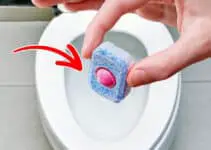I’ve recently started riding an e-bike. E-bikes are great. They combine the fun of cycling with the even bigger fun of not having to struggle to go up hills if you’re not a strong cyclist.
Also: The best electric bikes for commuting
And it’s a lot of fun to jump on the bike and head out on an adventure. But there’s one thing that all cyclists worry about — and that’s a flat tire.
Getting a flat tire on a pedal bike is a pain, but getting a flat on an e-bike is even worse. The extra weight of an e-bike, along with the extra range that the motor allows means that you could be hoofing it back home miles if something goes wrong.
This is why I’ve taken multiple steps to reduce the chances of them happening when I’m cycling.
First off, there’s prevention.
My first line of defense is adding a compound in my tires called Slime Tube Sealant (there’s also a version for bike tires that don’t have an inner tube). This is a mix composed of fibers, binders, and proprietary clogging agents and the idea is that as soon as you get a puncture, this oozes out of the hole and creates a plug.
Slime can instantly seal punctures in your tubes up to 1/8″ (3mm), and I’ve used this in the past with good effect.
It can be a bit of a mess to get the Slime into the tubes (you have to remove the valve and squeeze it into the tube), but once it’s in there you pump up the tires, you’re good to go.
One bottle is good for two tires.
It offers cheap yet really effective protection against punctures.
Next up, for when my first line of defense doesn’t work, I need a puncture repair kit.
This is nothing like the puncture repair kits of the olden days, where you have to mess about with smelly adhesives and wait ages for the glue to set.
The tire levers in this pack are used to get the tire off the rim, and then you roughen up the area of the tube where it’s leaking with the little scuffer, and then slap on a patch and you’re ready to go.
Not sure where the tube is leaking? Feel around with your fingers, or use water and look for the bubbles!
Finally, I need something to inflate the tires.
Sometimes you find yourself with a puncture that you can’t repair, and in that case you need a way to keep the tire inflated to get you home. Or maybe you’ve patched up the hole and you’re now ready to get on your way.
I carry a CO2 inflator with 25g CO2 canisters.
You thread the CO2 cartridges onto the inflater, screw the inflater onto the valve, and turn the knob to allow the CO2 into the tire.
And you’re done.
You can calculate from the size of the gas canister and the size of your bike’s tire how much pressure a single cartridge will give you. For my e-bike with touring tires, a single 25g cartridge gives me the right pressure to get me home.
These are smaller, quicker, less hassle, and much more convenient than carrying an old-fashioned bike pump.
While not needed to fix most tire problems, if you need to change the tire or tube on the road, it’s a good idea to have some basic tools.
Sometimes you need to do some running repairs, so having a few basic tools can make all the difference.
I’ve found having a small folding tool can cover most eventualities.
The Topeak Mini 20 Pro has pretty much all the tools you’ll ever need to carry out repairs on the roadside or the trail.


